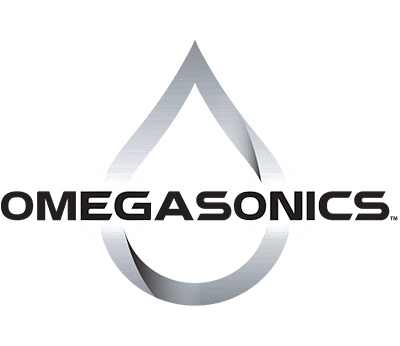There is an optimum frequency for ultrasonic cleaning systems, depending on the part and contaminant. Omegasonics explains how frequencies affect cleaning.
Ultrasonic cleaning systems are designed and built in a wide range of operating frequencies, from around 25 kHz to 170 kHz. Why such a wide range? Does it even matter? Ultrasonic cleaners are ultrasonic cleaners, right? Wrong.
The frequencies vary so widely because different materials and different contaminants require different frequency ranges to clean parts efficiently and effectively. Manufacturers are aware of this and provide ultrasonic cleaning systems designed to suit the application, or at least a particular group of applications.
Ultrasonic cleaners use high-frequency sound waves to produce pressure pulses that create gas bubbles in the cleaning liquid. When the bubbles collapse (implode), they release energy in the form of pressurized jets that get directed toward the surface being cleaned, dislodging contamination in the process.
The bubble size is determined almost exclusively by the frequency of the transducer; in ultrasonic cleaning, the higher the frequency, the smaller the bubble, and the more bubbles that exist. Unfortunately, the smaller the bubble, the less energy it has when it implodes, which means it cleans a smaller area, and cleans it with less impact. So we must immediately compromise—do we want a lot of small bubbles, or fewer big ones to clean our parts?
Do we want to take longer to clean parts with tiny, gentle bubbles, or knock the cleaning out quickly with large, aggressive bubbles? Well, the answer is: It depends. The parts we’re trying to clean and the type of contamination we’re trying to remove ultimately determine the ultrasonic cleaning frequency we choose.
Ultrasonic cleaners that operate in the 25 kHz range produce large, forceful bubbles that can remove surface contamination rather quickly, but cannot penetrate small cracks and crevices that exist in an intricate part. That means that this frequency range is ideal for cleaning mill scale or rust from the surface of a large, flat part, and does it quickly. On the flip side, it does a terrible job of cleaning grease from the root of a fine-pitch threaded hole; the bubbles are just too big to penetrate sharp grooves effectively.
On the other end of the spectrum, 170 kHz ultrasonic cleaning systems are fantastic for removing even the smallest bacteria and mold spores from the intricate crevices of medical instruments and similar devices, which may consist of knurled handles, small screw heads, tight-fitting connections, and hidden surfaces.
Semi-conductor wafers benefit from the same cleaning frequencies for similar reasons. The cleaning is gentle, and takes a long time relative to lower frequency ultrasonic cleaning, but the goal here is different—get deep into every tight and hidden space in the device and remove all traces of contamination, versus rapid turnaround of parts in a production process. It would take forever to clean soot, grease, or scale from a large part using this cleaning frequency.
In the middle of the ultrasonic cleaning frequency spectrum is the 40 kHz machine, the most common and universal of ultrasonic cleaners. It is a compromise of the two extremes, but for most commercial cleaning applications, does a great job. It can effectively clean contamination from large areas—even though it takes slightly longer—yet can still penetrate small blind holes, crevices, sharp inside corners, and hidden surfaces to remove contaminants. It is this diversity that makes it a popular choice for a range of ultrasonic cleaning applications.
An optimum cleaning frequency does exist for each combination of part, material of construction, and contaminant. Even within the optimum frequency range, it is possible to further enhance cleaning by choosing the correct detergent, temperature, and duration. Ultrasonic cleaner manufacturers can help us choose a starting point for all of these variables, and from that point forward, it’s just a matter of testing and determination to get the exact right recipe.
Contact us for more information on ultrasonic cleaners. You can also find us on LinkedIn and Twitter.
